|
So this is a sort of First Play! Love Letter: Adventure time, like Love Letter: Batman is a reskin of the original Love Letter. I'm not going to go into any particular detail here and will only list the notable differences. if you want to know more, the blog on original can be found here. Unsurprisingly, all the art featured throughout the game is sourced from the cartoon and the characters will be recognisable to fans. If you're not a fan, it's quirky and very cartoony-styled gentle parody of the original artwork with a bright palette, a style I find perfectly acceptable. Annoyingly though, some of the cards have been renamed; 'The Prince' becomes 'Hero', 'Handmaid' becomes 'Companion' and so on. I know that it's probably a better fit with the show's narrative and theme but it still means that even players who know Love Letter well will be referring to the rules! Instead of standard hearts or cubes, Love Letter: Adventure Time uses bright, multicoloured acrylic 'gems' to track scores and I have to admit they are pretty nice. With a couple of exceptions, the rules are broadly speaking, identical to vanilla Love Letter. Luckily, these additional rules don't break the game like some other reskins do but by the same measure, nor do they add anything to it and truth be told, can be easily ignored. Which is something I would do since I've always found the original Love Letter to have the best implementation of the rules. So is it worth getting Love Letter: Adventure Time? If you've already got some version of Love Letter; unless you're a completionist or a fan of the cartoon then you can skip this. However, if you're a fan and don't have a copy of Love Letter, it's a fantastic game and you should definitely get one and this version is a good as any. In fact if you don't have a copy of Love Letter, you should get one regardless!
0 Comments
14th June 2022 It's a Tuesday and we're with the Woking Board Gaming Club at The Sovereigns for some gaming entertainment. I always thought a good leader leads by example and doesn't hide? On the other hand most leaders don't have to contend with 4 feuding factions and the undead! Hidden leaders is a fantasy themed sort of hidden role (Leader!) game with a dash of social deduction. What's in a game?
There aren't too many components to Hidden Leaders but they're all of a good quality as you'd expect from any modern game. The cards are OK, the board is fine and the meeples are of a satisfyingly chunky quality. Art-wise, Hidden Leaders is fantastic, each character is unique and has their own name and illustration, all of which are cartoony, brash and colourful, it's a style that appealing and perfectly fits the game's slightly humorous and not too serious theme. There are icons for the 4 factions which are easily understood as well as a handful of other icons. It doesn't take long to comprehend all of this and it won't prove an obstacle. How's it play?
On to play Hidden leaders is a game primarily about manipulating the 2 meeples on the board because their relative positioning at the game end will determine which faction wins the game and by extension which player wins. This done by recruiting i.e. playing hero cards into your personal playing to create your own band of heroes. There are 4 factions. Black: Undead. Blue: The Water Folk. Green: The Hill Tribe. Red: The Imperial Army. The game uses usual a traditional turn structure with the active player completing their action before play progresses to the player to their left. During the active player's turn, the following must occur.
Endgame The game continues until any player has put 5-8 face-up hero cards into play (Dependant upon player count.), face-down heroes do not count for the purpose of triggering the game end. When this occurs, the current turn is the last turn and we go to declaring a winner. First, the victorious faction must be determined, each one has their own winning criteria based on the positioning of the 2 meeples on the track. Black (Undead.) wins if both meeples are in the black area of the track, that is on spaces 9-12. This is regardless of the positioning of the meeples relative to each other. Blue (Water folk.) win if both meeples are on the same or an adjacent space on the track - provided of course they are both not in the black spaces. Red (Empire.) wins if the red meeple is 2+ spaces further along the track than the green meeple, so long as both meeples are not in the black area. Green (Tribe.) wins conversely, if the green meeples is 2+ spaces further along the track than the red meeple, again, Next; players reveal their hidden leader cards and face-down hero cards. The player whose leader is aligned to the winning faction, wins! It's quite likely that more than player will have a leader aligned to the winning faction. If this is the case, then the player with the most hero cards aligned to the winning faction wins. Overall
The first thing to mention is the game's asymmetrical winning criteria, it's something I've not seen elsewhere and is key to Hidden Leaders' appeal and informs all of the gameplay and tactics mentioned below. The objective is pretty straightforward in Hidden Leaders. Players will not only be trying to manipulate the meeples to their own advantage but also trying to deduce the motives of their opponents from their actions. This will allow players to try and anticipate their opponent's actions to their own advantage. E.g., a player moves the red meeple up closer to green one which is ahead, is it because they want to bring them together to want the red meeple to overtake the green or do they want to put the meeple in the black area. In this example, one single move can work towards the winning conditions of 3 factions. Interestingly, when cards are discarded to the wilderness, it's face-down so others can't try and see which cards are essentially worthless to the discarding player. Further more, players will at least 1 face-down hero. All of this is compounded by each leader being aligned to 2 factions so it can be hard to try and guess which faction they're supporting. It's a great use of 'imperfect knowledge' mechanics that will keep players on their toes. Hidden Leaders is a fairly easy to learn rules-light game, it mixes this accessibility with a higher level of play and depth of complexity that comes from trying to anticipate the actions of opponents that will make players think. So, while theoretically the game has a reasonably quick play time, some players will spend a lot of time analysing their options and next move. In short; the analysis paralysis can be strong with this one and it seemed to take longer than expected. But that can be down to the players. It should also be noted that whilst Hidden Leaders doesn't really have direct interaction between players, it definitely has a bit 'take that' mechanics. It's not too harsh to be fair but it's there and I for some players this is a no-no. Having said all of that, I found the gameplay a little slow, it felt like 1 card-play/actions wasn't quite satisfying enough and it felt like there was a bit too much downtime between turns, although we did play with a player count at the higher end. Otherwise I can't fault Hidden Leaders. If card games fairly heavy on deductive reasoning and trying to gauge the motives of other players are something you like, you'll probably find this engaging and enjoyable. 13th May 2022 Friday the 13th! And I'm in Farnborough with work colleagues for some gaming fun. Viva la resistance! Will you overthrow the tyrannical oppressive government or welcome your new overlords? Let the cards decide. Resistance is a hidden role card game that is also the predecessor of Arthurian themed The Resistance: Avalon and as such is mechanically almost identical to that game. In fact The Resistance or at least the basic version of it is actually a simpler game than The Resistance: Avalon. Reading my blog about The Resistance: Avalon will tell you everything you need to know about The Resistance. A full write-up here would be pointless. There's only 1 notable difference: The basic version of The Resistance only has 2 role cards, resistance fighter and spy. Otherwise the games play identically. At the start, each player is given a secret role as a resistance fighter or spy. The key thing here is that the spies know who each other are and are trying to sabotage the missions while the resistance fighters are trying to uncover the spies. The mission leader chooses a team and all players vote on whether to approve or reject that team. When a team is finally chosen, they all go on the mission. This involves the team voting on whether a mission succeeds or not. Resistance fighters must choose to succeed at missions but spies can choose to either succeed or fail. All of these decisions and voting are done in secret and resistance fighter will need to watch the voting, who votes in what and the outcomes of the voting. Spies will need to be patient, revealing their hand too early will flush them out. If by then of the fifth mission, the spies have not sabotaged 3 missions, then the resistance wins. If 3 missions are sabotaged Overall
There's not too much to add here, everything I said about The Resistance: Avalon also applies here, but that was sometime ago and I can't remember exactly what I said. So I'll summarise here. Mechanically, The Resistance is pretty solid with a easily understood set of rules that give opportunities for lying, deception and deduction. There's nothing to fault there. The quality of the game though, comes almost entirely from the participants. Players who love to bluff and mess with other players will revel here and be in their element. Whilst those who aren't fans of this type of game are likely to find it slightly uncomfortable, won't enjoy it and thus probably won't play it as well. So if you're fan of hidden role games and are playing with like-minded people, The Resistance is definitely worth trying. 12th January 2022 Wednesday gaming round Simon's concluded with Mascarade, a fairly chaotic hidden role card game. What's in a game?
Mascarade's components are normal standard you'd expect from a modern game, the game's standout quality are the colourful, detailed illustrations on the mask cards and courthouse board which to me look to have a late medieval/renaissance theme. The game features a small amount of straightforward easy-to-understand iconography, having said that, the game also features a whole bunch of different roles to try and remember; which are only displayed on player guide cards. How's it play? Setup
On to play Mascarade's opening is quite unique; the initial 4 turns must always be the exchange masks action, which is understandable as it randomises the cards that were initially shown. After these 4 turns, play proceeds as you would expect, the active player takes their turn, then play progress clockwise. During their turn, the active player may perform 1 of the following 3 actions.
Endgame There are 2 criteria to ending a game. If a player acquires 13+ gold coins, they win. If a player loses all their gold, the game immediately ends and the player with the most coins wins. Overall
For a large part, Mascarade feels like a pretty standard hidden role game, what makes it stand out though is the card-swapping mechanic. During play, it's likely that players will quite quickly lose track of which character they have and announcing a card can always be risky; now that's what I call a hidden role! This can of course be remedied by taking the look at card action, but is it worth spending an entire action to do so while other players could be earning money? Maybe it's worth taking a the risk - or bluffing! Nudging players into this central dilemma is what makes it unique and interesting. Otherwise, you'll be on pretty familiar ground if you like hidden role games: Trying to work towards your goals while also trying to calculate what other players are doing or which character they have - although the randomness of Mascarade has made that trickier! It's hard to gauge a game Mascarade because like many hidden role games, it's quality is dependant on the players involved, as you tend to play the player and not the game. Like most hidden role games, Mascarade can be a bit divisive. If you don't like this style of games, you can probably give this a pass. However, if on the other hand hidden role games are you thing and particularly if you like a bit of unpredictability in your game, then Mascarade is definitively worth a try. 19th September 2021 Sunday afternoon gaming at The Sovereigns continued with Love Letter: Batman. Love Letter: Batman is of course a licensed reskin of the most excellent Love Letter, a game that we've played a lot of in the past. I'm not going to talk about Love Letter: Batman too much because it differs from the original in only 2 ways - more on that later. Love Letter: Batman cleverly maps characters from the Batman milieu into the game. Batman becomes the guard, which when you think about it makes sense, since he's able to immediately take out enemies if he's smart enough. The Joker becomes the princess, power in some situations, but liability in others and he's one everyone's looking. Robin becomes the handmaiden, protecting the player by drawing enemy attacks away with his brightly coloured garb! The cards in Love Letter: Batman pretty standard quality and are all illustrated with suitably comic book styled artwork which all looks the part. The game also utilises bat-symbol themed scoring tokens - pretty cool. The rule changes
Love Letter: batman changes 2 rules from the original.
I've heard it said that it this rule makes the game play quicker, but the higher victory threshold for 3-4 player kind of negates that. Conversely; in classic Love Letter, even if one player is 1 point away from winning and all the other players are at 0 points, until that player has won that final hand to win that final point, it's not over. Yes, it'd be a hard turnaround and a longshot, but it doesn't change the fact that nothing is over 'til everything is over. Want my opinion? Just play Love Letter: Batman as classic Love Letter. Yes, it does make having this version sort of of pointless, but the classic version is the best version and there's nothing stopping you yelling dinner, dinner, dinner dinner, BATMAN when you play a card. 25th July 2021 Sunday gaming on Board Game Arena continued with Bang! The American west could be an ornery, dangerous place; friend or foe, it was always hard to tell, particularly when you all sat in circle and pointed pistols at each other, with nothing else but a spittoon between all of you. Caveat: We have only ever played Bang! digitally. What's in a game?
How's it play? Setup
On to play The main purpose in Bang! is to attack your enemies and aid your allies (If you have any.)! This is is not quite so simple as it sounds though, since it's unlikely that players will know who is an enemies or a friend, at least at the start. Additionally, you may not even be able to reach you enemies, most attacks in Bang! have a range of 1, this means an attack can only target someone 1 space away, i.e., someone adjacent, there are several weapons have extra range and there're also ways to alter ranges. A turn in Bang! consists of 3 actions.
Endgame In Bang!, play continues until one of three win conditions are met, these win conditions will depend what hidden role players have. Sheriff/deputies: All outlaws and the renegade must be eliminated for the sheriff/deputies to win. Outlaws: Eliminate the sheriff and the outlaws win. Renegade: Win by being the last man standing. Overall
Bang! is a pretty straightforward hidden role game, however, unlike some hidden role games, most of the game's 3 factions will start not knowing who their allies might be, with exception of deputies and the renegade (Who has no allies.). Players will need to observe other players' behaviour to try and gauge their motives, this is made more difficult because the renegade will be looking help or hinder either of the other factions depending on the situation, adding to this are the range restriction rules that can force players to change behaviour. Additionally, in Bang! actions are card driven, i.e. a player's decisions will be to some degree limited by the cards in their hand; no BANG! card - no attack for example, this can mean even more restrictions on player choices. We found this made for a slightly unsatisfying experience, particularly since there's a a fairly strict rule on hand size and it becomes a case of use-it-or-lose-it with cards. It didn't help that sometimes it felt like the card play made the game a little futile, managing to play a Bang! card only for your target to immediately heal it made for a negative feeling. We played Bang! with a lower player count and online; with more players and in-person play I'm sure that it would've been a different experience, a game like Bang! will thrive with more players. I'm not the biggest fan of hidden role games and I don't think Bang! is a bad game but I can think of other similar games I'd rather play - including it's later companion game; Bang! The Dice Game. 22nd December 2019 Sunday is here at 'The Sovereigns' in Woking. 50 Fathoms is still on hiatus so for the final get together before Christmas we're playing board games. The first game was 'Agatha Christie's Death On The Cards'. Will the other players learn your darkest secrets? Will you catch the murderer? Or will you manage to get away with murder! Only the cards can decide in... Death On The Cards! What's in a game? Death On The Cards uses 3 different types of cards. Secret cards, game cards and the 'Murderer Escapes!' card , game cards are further divided into other cards:
How's it play? First there's setup, which is a little different depending on the number of players.
Social disgrace What's social disgrace? When a player has all of their secret cards turned face-up, all of their secrets have been revealed and they're disgraced. What does this mean? It means that when they become the active player, all they can do is discard exactly 1 card and draw 1 card. It is possible to come back from social disgrace as there some cards that allow secret cards to be turned back face-down. Endgame How the game ends will depend on the player's role in the game.
Overall
'Death On The Cards' plays with 2-6 people and what's interesting is how the game changes depending on the number of players. With 2 players, there's no secret to who's the murderer. The game is a war of attrition. Now, for some maths (Hopefully my maths is correct.). Let's look at it with 3 players.
Now lets look at a 6 player game.
This means it becomes easier for the murderer to get away with it in bigger game. Now I don't see this as a flaw, but it is definitely something that changes the dynamics of the game. With 3 players for example, 'Death On The Cards' can be played as a straightforward card game. With 6 players, it's much harder to capture the murderer. Players will need to form alliances and target suspicious players as quickly as possible. But then, this gives the murderer and accomplice opportunities to bluff, lie, double cross and sabotage their 'allies'. It becomes a lot more like a hidden role game. Anyway, regardless of the mathematics, the game mechanics fit the theme very well. 'Death On The Cards' can learned quickly and plays quickly too . It's a great filler game and even though I'm not a fan of hidden role games, it's a lot of fun. It's definitely worth giving it a try. 20th October 2019 Sunday lunchtime is here and we're at 'The Sovereigns' in Woking. There's no 50 Fathoms this week, so that means board games. We began with 'Avalon' an 'Arthurian' themed game. It seems that a reoccurring element in Arthurian themed games is 'betrayal' (Or is it confirmation bias on my part?). Is Avalon any different? Does it buck the trend? In a word; no! Because Avalon is a hidden role game that's all about betrayal. What's in a game? Avalon has very few components, but they are of a good quality.
How's it play? Because Avalon is a 'hidden role' game it requires quite a bit of setup first. For the games of Avalon we played was 5-player and we used the following 'good' characters: Merlin, Percival, and a loyal servant of Arthur. And the following 'evil characters Morgana, and the assassin.
The objective in Avalon is to go on 5 quests, the 'good' characters want at least 3 of these quests to succeed. Meanwhile the 'evil' characters want at least 3 quests to fail and are looking to sabotage the quests. Each round is divided into 3 phases, team selection, voting, questing. Team selection
Once the leader has finished nominating players for the quest, everyone will then vote on their team selection.
Now that the team selection has been approved, the game moves on to questing.
Endgame Play continues until:
If the 'good' players have successfully completed 3 quests; the assassin player can 'kill' a character. If the assassin kills the Merlin character, then evil wins! Additionally, as mentioned above, 'evil' can also win during the team selection voting. Overall
I'm going to start by mentioning that I'm not a particular fan of hidden role games. I think it's because I'm not entirely comfortable with my friends flat out lying to my face! But I have to say that Avalon is a good hidden role game. I think that the reason it works so well is because there are 2 'tiers' of play going on at once. Most hidden role games I've seen have players making deductions based on the results of how things play out. Which for Avalon is the quest outcome But Avalon has something different, something extra. It also has the 'team selection voting phase', which has open voting for everyone to see. This gives players plenty of opportunity to try and glean each other's motives. 'Good' players will want to try and vote down teams that they suspect contains 'evil' characters. It's hard for a quest to be sabotaged if it contains no evil characters. Conversely 'evil' characters may want to vote down a team that does not contain evil characters. Finally, the assassin introduces a sting in the tail. The Merlin player will know exactly who the villains are. But they must be careful when selecting or voting for teams. If they're too obvious, then the assassin player may manage to deduce who the Merlin player is, then 'evil' will win. It's an intriguing idea and a real balancing act for the Merlin player. So, if you like social deduction, bluffing and hidden role games, Avalon is definitely worth a try. 24th September 2019 Tuesday night gaming at 'The Sovereigns' in Woking continues. The second game of the evening was 'Bang! The Dice Game'. A hidden role game driven by push your luck mechanics. Let's see how this goes? What's in a game? Bang! The Dice Game comes in a small portable package. Components include:
How's it play? First there's set up.
What are the hidden roles? There are 3 types of hidden role in the game. The number of each role that appears in a game will depend on the number of players, except there is only ever 1 sheriff.
And we're good to go. Playing the game is quite straight forward.
Dice and their meanings
So we now know what we do with the dice. But what do they mean. The 5 custom dice all have the same symbols on their faces instead of numbers.
But what about the arrows? There are 9 arrow tokens in the supply, when the last arrow has been taken by a player; then Indians Attack! When this happens, characters immediately take damage equal to the number of arrows in their personal area. Then all the arrows are returned to the central area. Overall Bang! The Dice Game is a little unusual for a hidden role game. There is very little need for questioning amongst players. As is the fact that one role is revealed to all players, putting a big target on the sheriff player's back! The deputy players and possibly renegade players will need to protect the sheriff. That's not the sheriff's only problem, the sheriff needs to figure out who is an ally and who is an enemy and not attack their deputies. Deputies need to identify other deputies if possible (If there are other deputies). But their 2 main objectives are protect the sheriff and attack anyone attacking the sheriff. Outlaws have it easy really, they can concentrate on attacking the sheriff. Outlaws can try a protect other outlaws, but well they're outlaws! Renegades are in a tricky position, they want to get rid of the sheriff, but need to eliminate outlaws first. Bang! The Dice Game is a 'lighter' hidden role game and is quick to learn and play. It serves well as a filler game. 29th June 2019
It's a Saturday lunchtime at 'The Sovereigns'. We should be playing 50 Fathoms, but sometimes life interferes. So instead we are playing Princess Legend. Will the Prince find his Princess (Yay!), or will he get the Queen instead (Boo!)! Only you can find out in... Princess Legend. Princess Legend is a 'bluffing/social deduction/hidden' role card game. Everyone is given a role to play and the 'Prince player' tried to guess who is the Princess. What's in a game? Princess Legend is pretty light on components. A deck of 8 cards. They are actually coasters and not traditional playing cards in size. Each card has a colourful portrait on it. There 3 types of character on the 8 coaster.
A bunch of tokens to track scoring. And that's it! How's it play? Set up. The amount of coasters that are used in a game is equal to the number of players plus 1. Thus if you play with 4 players, the game would be played with 5 coasters. Princess Legend is played with a minimum of 3 players and 4 coasters. The Prince, the Princess, the Queen and the Maid are always used in all games. The other characters will be used dependant upon the number of players participating. Every player will play the role of the Prince. The Prince's role moves clockwise round the table in every round. Firstly, the Prince coaster is given to the player in the Prince role in this turn. The coaster is kept face-up as everyone knows who is the Prince. Secondly, the remaining coasters are shuffled and dealt face-down to the remaining players. One coaster is placed into the middle of the playing area is played by nobody. Once dealing has finished the Prince must close their eyes, then all the other players must reveal their roles (Now only the Prince does not know what everybody else's roles are.). Then all the players (With their eyes open.) are satisfied that they've seen everyone else's role, they turn their coasters back face-down again, the Prince can open their eyes once more. Now play can commence. Let's do this thing! The Prince's objective is to guess which player is the Princess (Or if it's the coaster in the middle). To do this, the Prince must ask the other players questions. However, the objectives of the other players will be different. Other players will want to get the Prince to pick a certain face-down coaster. Each player's objective is different according to their role.
However, there is a limit to the questions that can be asked. The Prince can ask each player only one question each (In any order.). When all players have answered a question, then the Prince has one final question that they can ask anyone. Not only is the Prince limited to the number of questions that they can ask. They are also limited in what the question can be. There are only 3 questions that can be asked. They are:
How the players answer this question is dependant on what role they have.
Once the Prince has made their guess on who is the Princess, all the other players reveal their roles. Then we see who has scored a point in this round.
Endgame. Play progress until each player has played the Prince 1, 2 or 3 times (Depending on number of players). Then points are tallied. Highest score wins. Overall? Generally, I dislike bluffing/hidden role games. But this is one of the better ones I've played. I like how your put into random, shifting teams each round and then trying to work with your temporary colleagues. Princess Legend also seems to differ to many other hidden role games: In most hidden role games, your role is hidden from all other players. But in Princess Legend, your role is only hidden from the Prince. I think that this makes the game a little less intense, a player only has to deal with questions from one other player and even then, there's a maximum of 2 questions to answer. And those answered are never really challenged, because the Prince play must use logic and reasoning to try and figure their choice. When a player lies to the Prince, figuring out it's a lie will provide information in itself. So I think Princess Legend is a 'tolerable' hidden role game - which for me means it's quite good - for that sort of game. |
AuthorI play, I paint. Archives
March 2024
Categories
All
|
















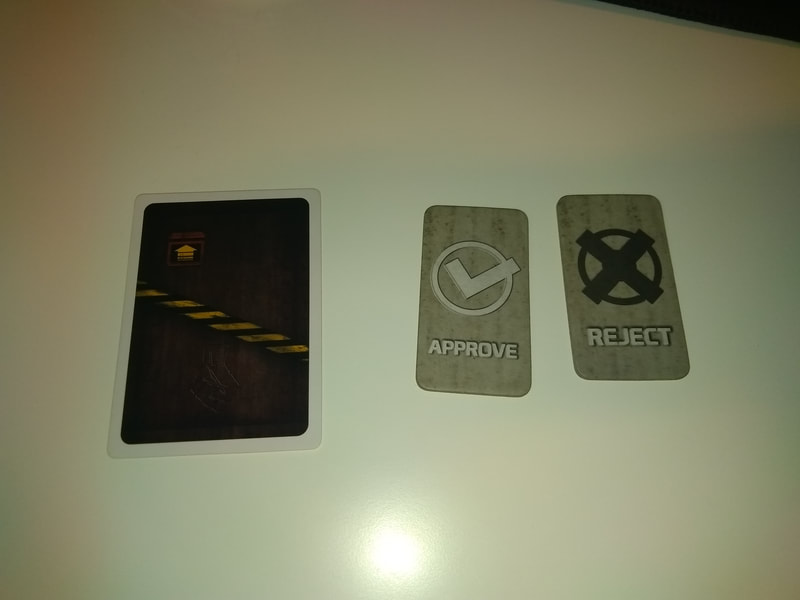
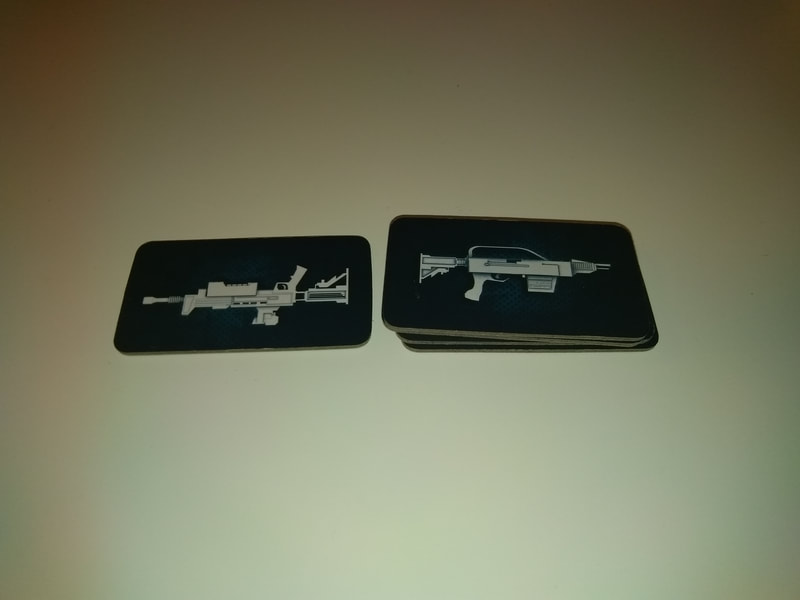
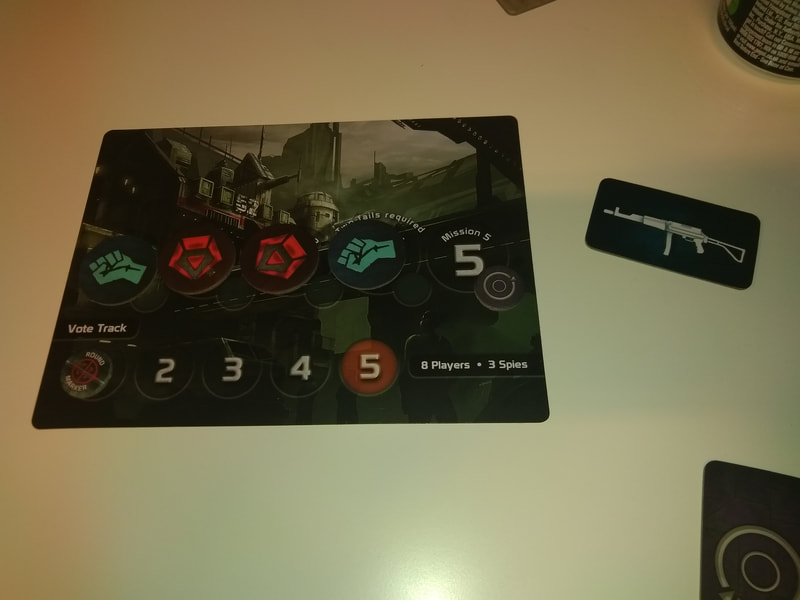
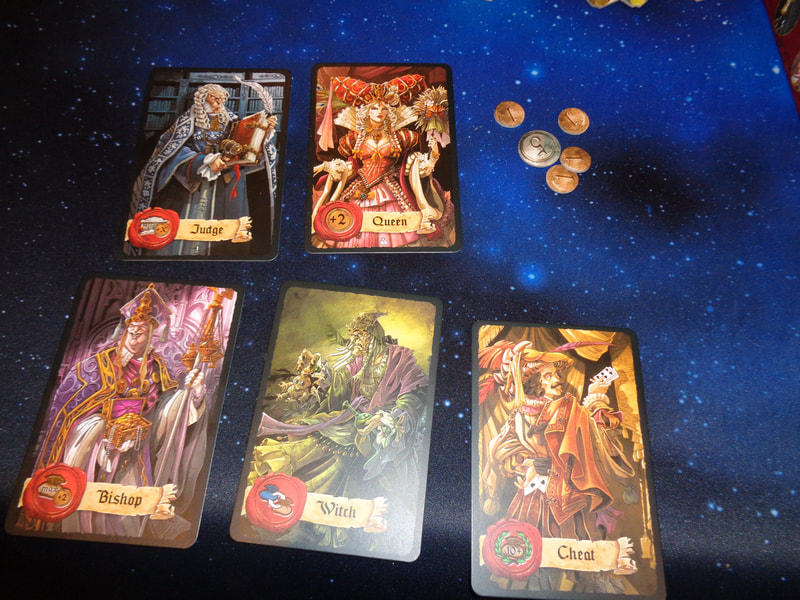
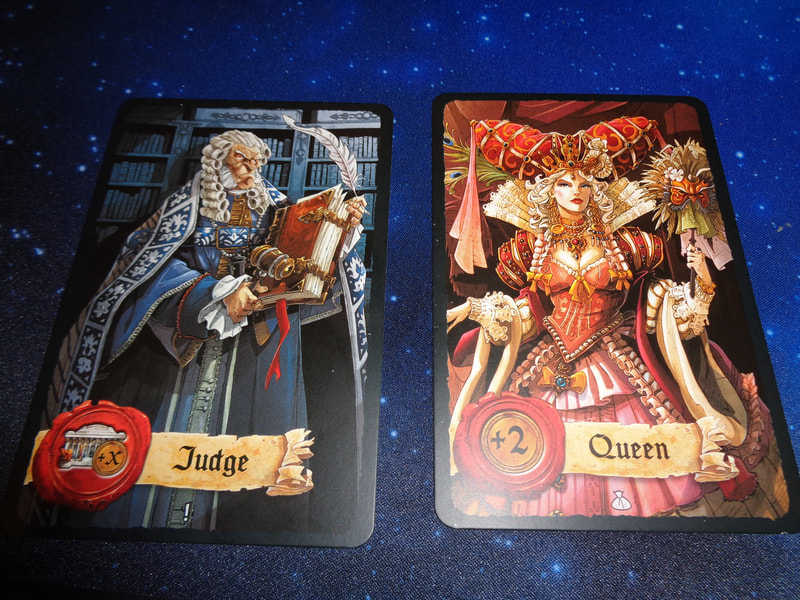
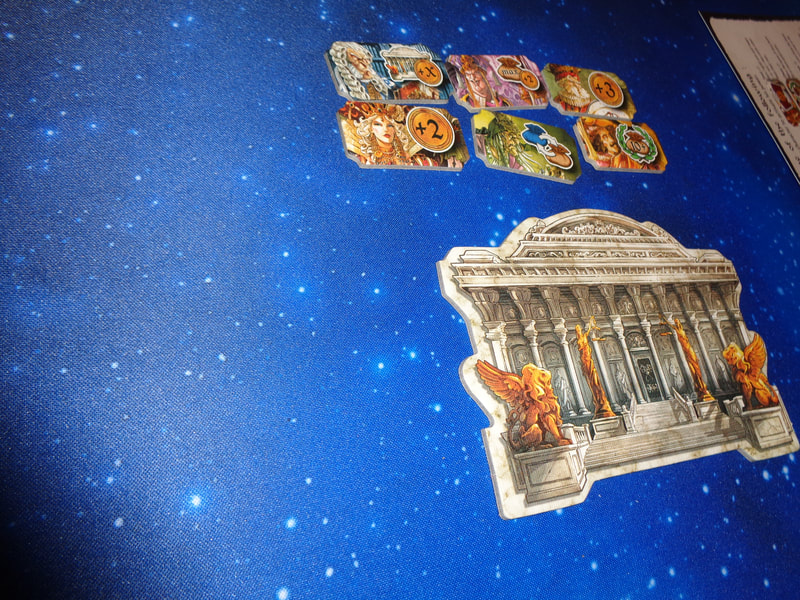

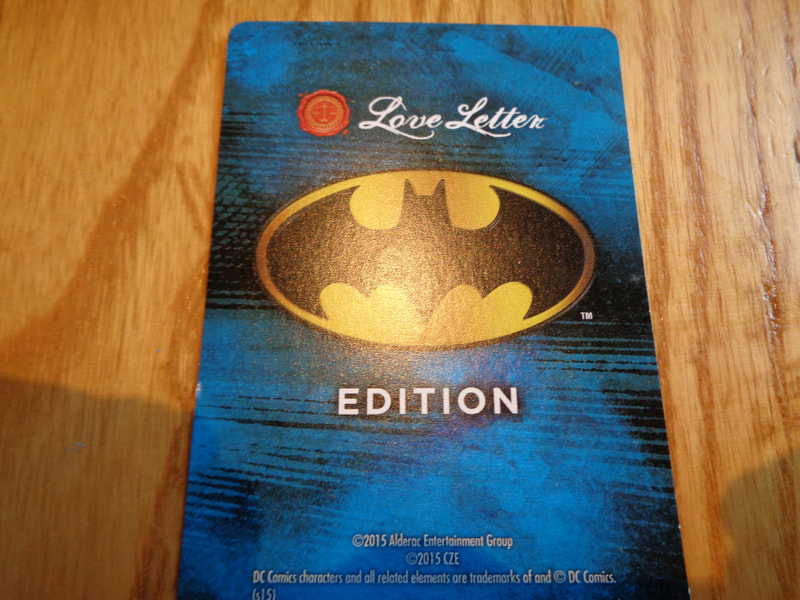
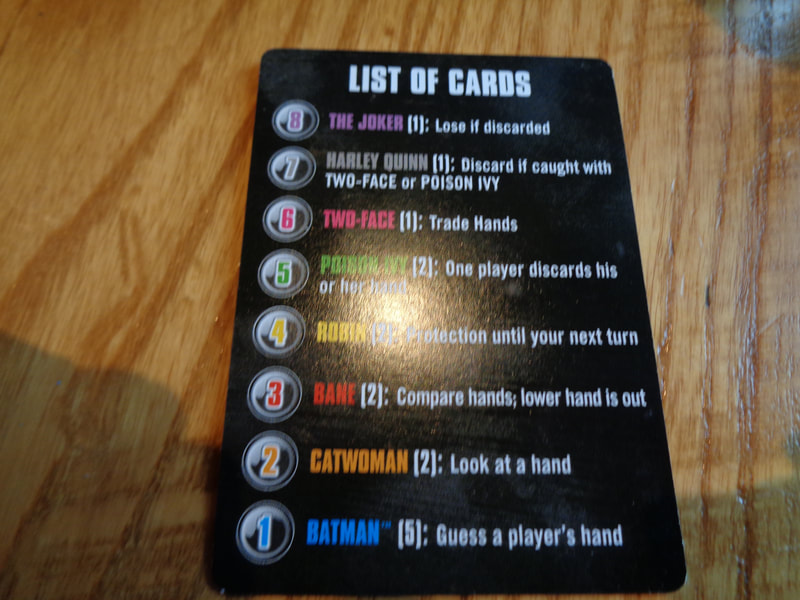
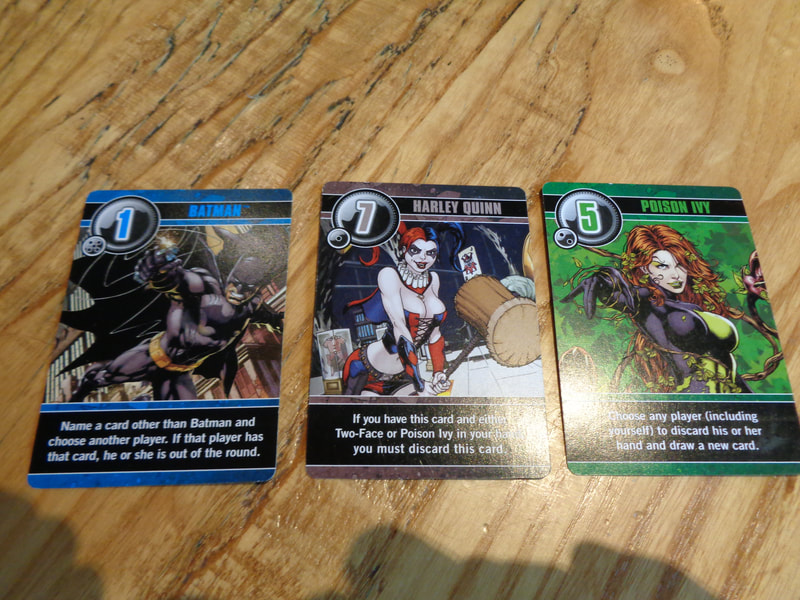

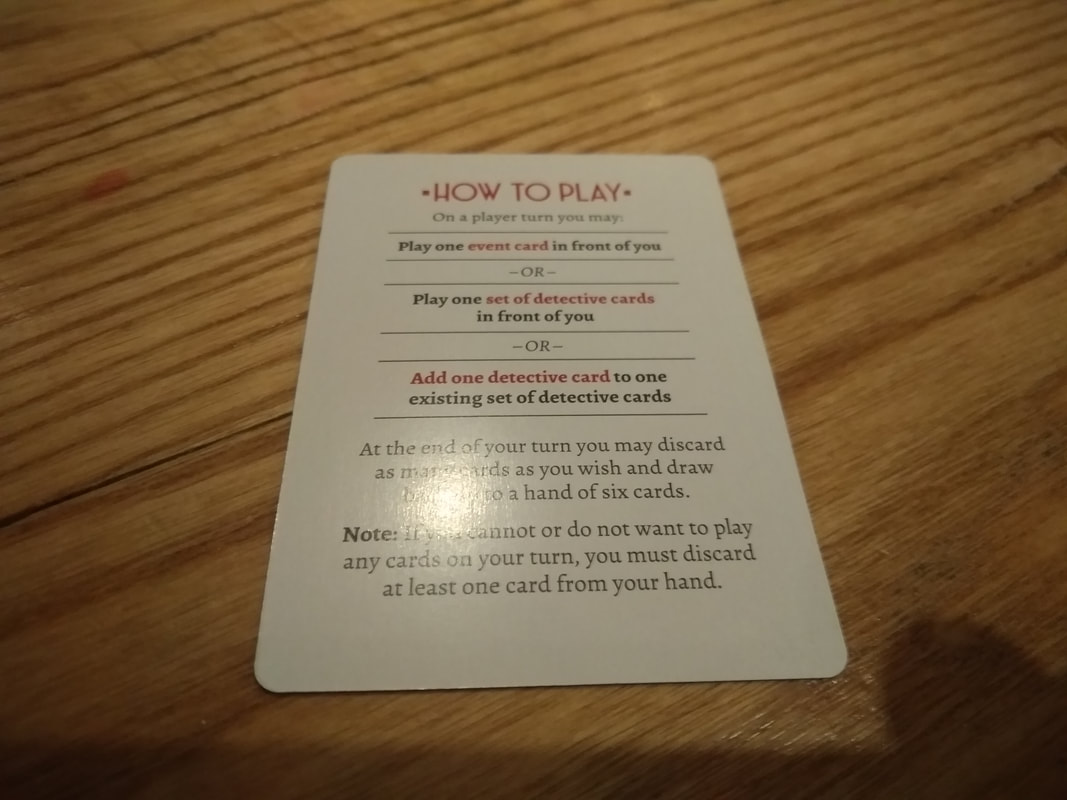
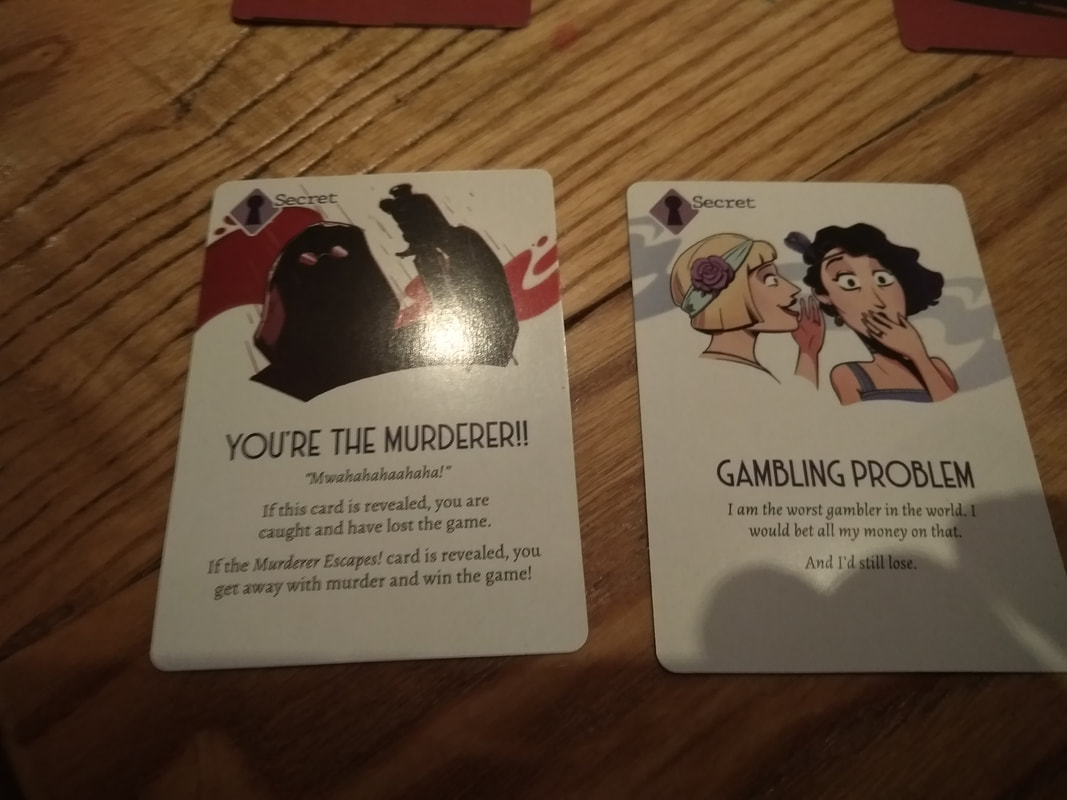
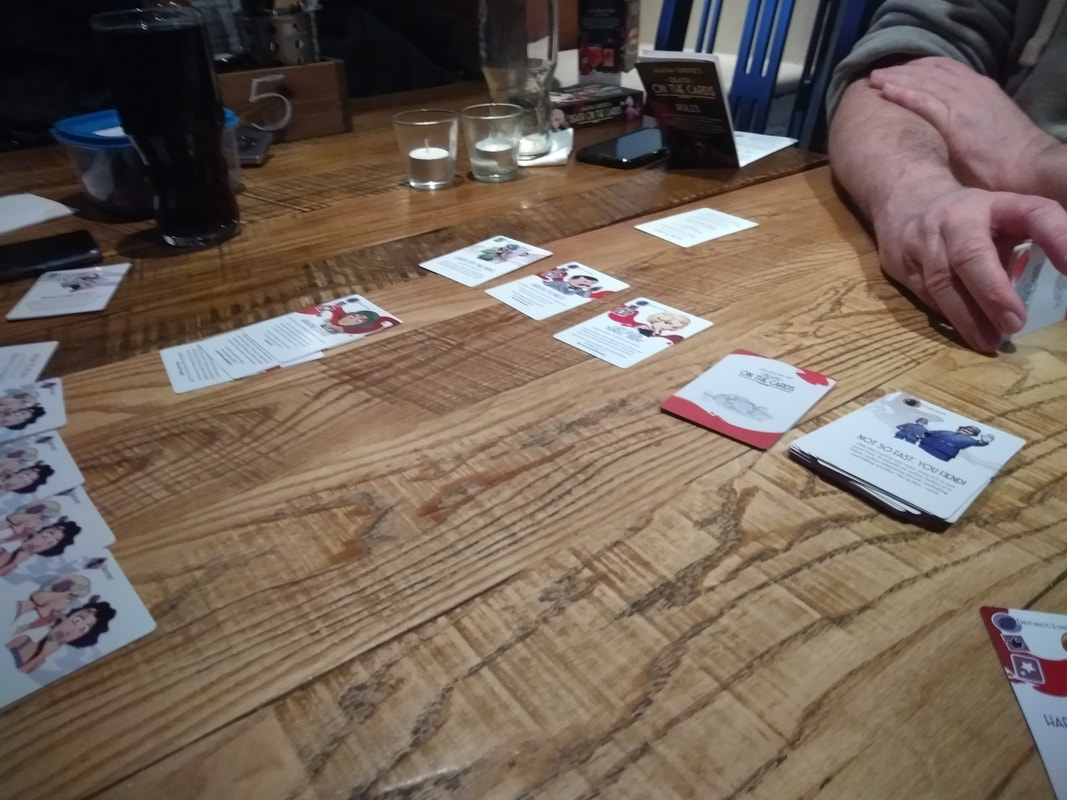
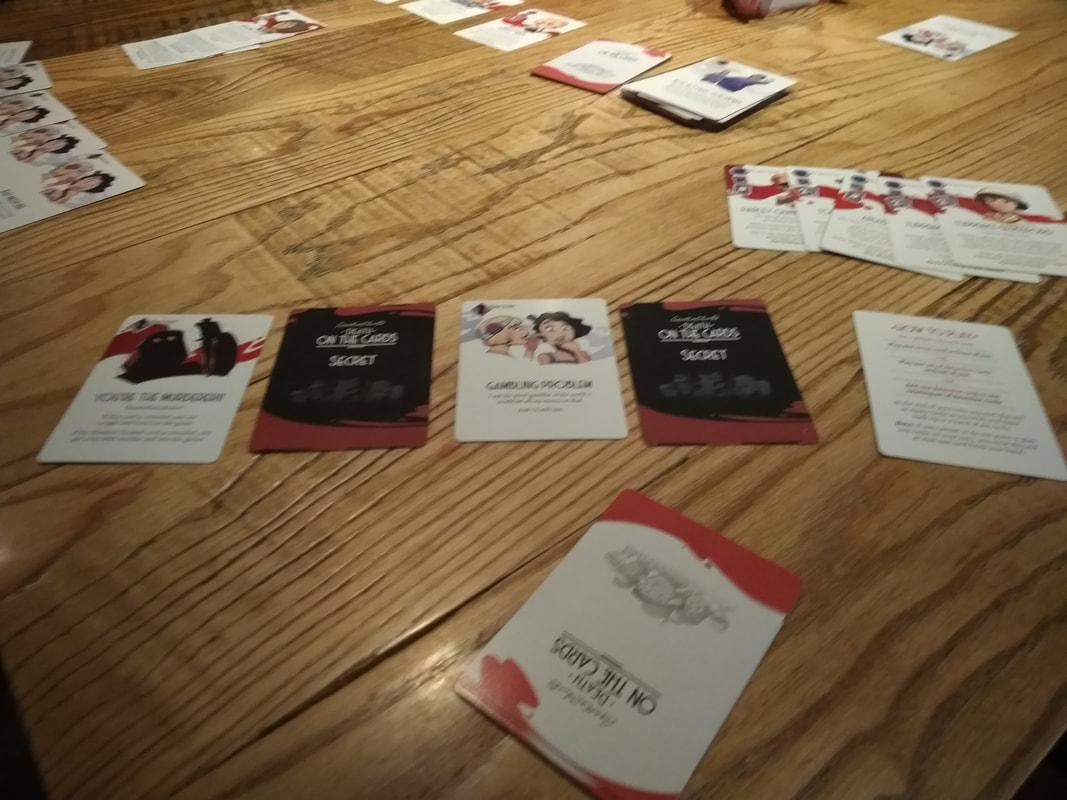
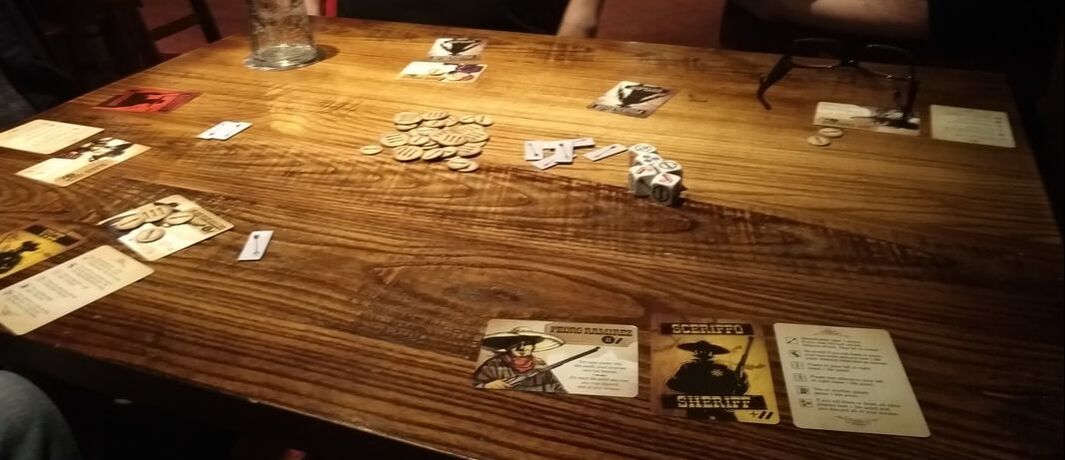
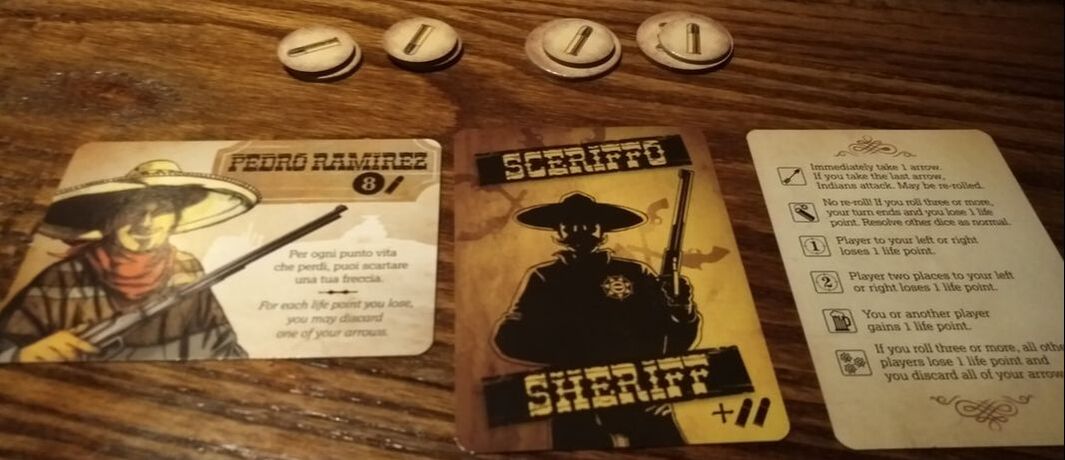
 RSS Feed
RSS Feed
